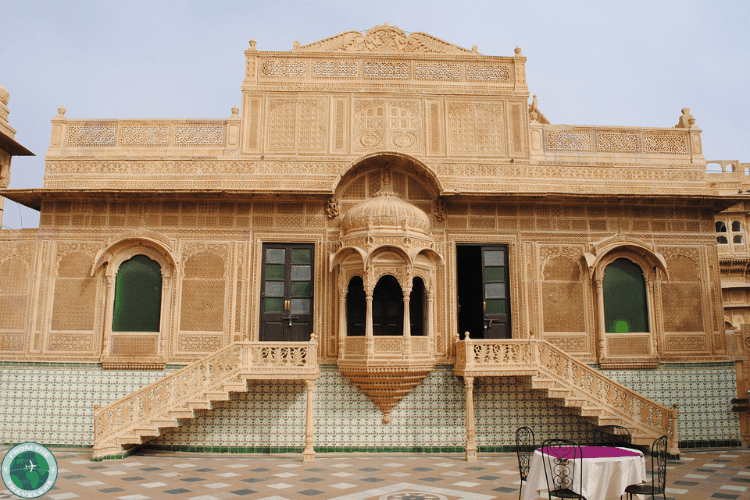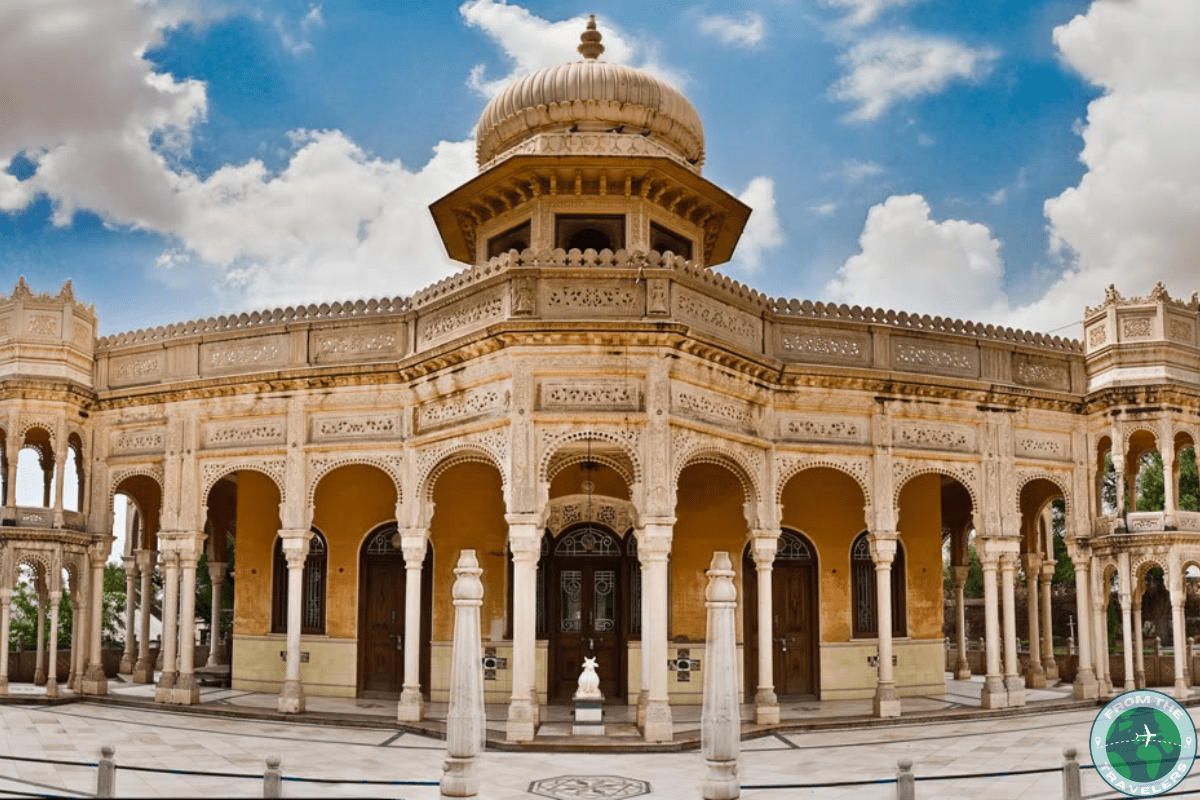India is a land steeped in history and culture, showcasing a rich tapestry of architectural marvels that echo stories of a long-gone era. Among them, Havelis is considered as living proof of the country’s rich heritage. In this blog, we will discover the architectural brilliance and cultural richness surrounding the magnificence of Indian Havelis. Journey through time and tradition with echoes of centuries-old craftsmanship and cultural tales knitted into every wall. Discover the charisma of havelis, where every stone tells stories of a bygone era.
Haveli Indian Middle Town Heritage
Haveli Indian Middletown Heritage is an appealing mixture of cultural resonance and architectural beauty. It is situated in the heart of Middletown and stands as evidence of India’s rich heritage, hence, letting you get a unique and immersive experience. It transports visitors to the grandeur of a bygone era due to its complex latticework, ornate facades, and lively courtyards. Haveli Indian Middletown Heritage is a cultural gem that preserves the architecture of previous years and serves as a vibrant hub for community events and get-togethers. It invites everyone to involve themselves in the beauty of India’s heritage in the welcoming environment of Middletown.

Historic Havelis in India
Wealthy merchants and landlords typically construct havelis, which are traditional Indian mansions or luxury residences. These buildings depict wonderful architecture, delicate craftsmanship, and a distinctive mixture of cultural influences.
Patwon Ki Haveli, Jaisalmer, and Rajasthan:
This group of five Havelis, built in the 19th century, constitutes one of the largest haveli complexes in Rajasthan. The Havelis are famous for their intricate architecture, with thorough carvings, facades, and balconies.
Nathmal Ki Haveli, Jaisalmer, and Rajasthan:
Constructed in the 19th century, Nathmal Ki Haveli is popular for its striking architecture and intricate carvings. Two brothers constructed the Haveli, which depicts a blend of Rajput and Islamic architectural styles.
Shekhawati Havelis, Rajasthan:
The Shekhawati region in Rajasthan boasts a multitude of havelis adorned with frescoes, making it famous. Cities like Mandawa, Nawalgarh, and Fatehpur are rich in these artistic villas, displaying the wealth and artistic skills of the merchant class.
Mandawa Havelis, Mandawa, Rajasthan, Indian:
Mandawa is a town in the Shekhawati region popular for its havelis. This Haveli is one of the notable ones, attributed to beautiful frescoes, paintings, and beautiful designs on its walls.
Hawa Mahal, Jaipur, Rajasthan:
Hawa Mahal, sometimes named the Palace of Winds, is not a traditional Haveli but it is a spectacular structure in Jaipur with a front elevation similar to a honeycomb. Maharaja Sawai Pratap Singh built it in 1799, allowing royal women to observe street festivals while remaining unseen.
City Palace, Udaipur, Rajasthan:
While a palace, Udaipur’s City Palace also include haveli-like structures. The palace’s complicated features involved architecture, courtyards, and balconies with eye-catching views of Lake Pichola.
Dundlod Haveli Indian, Dundlod, Rajasthan:
Dundlod is renowned for its well-preserved havelis, with Dundlod Haveli standing out as the prime example. It displays the architectural finery and craftsmanship of the previous era.
Alsisar Haveli, Jaipur, Rajasthan:
Alsisar Haveli, located in the heart of Jaipur, serves as a heritage hotel and once served as the residence of the Thakur of Alsisar. It consists of stunning frescoes, and a courtyard and depicts the grandeur of Rajput architecture.
Cultural Marvels: Indian Havelis
India owns a rich tapestry of architectural masterpieces, and among its cultural gems are the luxury havelis. These traditional villas, common in areas like Rajasthan, depict a pleasant mixture of artistic finesse and historical opulence. Havelis in India are cultural treasures that showcase the country’s architectural heritage. From Patwon Ki Haveli’s intricate carvings to Shekhawati’s lively frescoes, each haveli tells a unique story of long-gone splendour. Notable havelis in Rajhistan include Nathmal Ki Haveli, Mandawa Haveli, and Dundlod Haveli.
Features of Traditional Indian Havelis
Traditional Indian Havelis embody a distinctive mixture of architectural features that portray the cultural, social, and historical context of the regions where they exist.

Architectural Styles and Courtyards (Aangan)
Influenced by the regions where they are built, havelis exhibit a wide range of architectural styles. Mughal, Rajput, Marwari, and Gujarati architectural elements are usually incorporated to generate a unique and aesthetically pleasant design. A central courtyard, known as the “Aangan,” is a hallmark of Haveli architecture. The courtyard functions as the focal point, providing natural light, ventilation, and a communal space for family get-togethers and occasions.
Jharokhas, Ornate Facades, Frescoes and Murals
Elaborately designed overhanging balconies, recognized as Jharokhas, are an important aspect of Havelis. The structures add to the Haveli’s magnificence and provide a great view of the surroundings.
The walls of Havelis are decorated with pleasant frescoes and murals. These paintings illustrate scenes from mythology, historical events, and everyday life. The energetic colours and detailed artwork display the craftsmanship and artistic skills of the local artisans.
Craftsmen carefully carve filigree work, geometric patterns, and floral patches onto the facades of Havelis. The carvings’ detail reflects the owners’ wealth and craftsmen’s talent.
Chhatris (Dome-shaped Pavilions), Wooden Doors and Windows
Havelis are typically crowned with elevated dome-shaped pavilions known as chhatris. The structures enhance the Haveli’s beauty and provide a view of the surroundings. Wooden doors and windows with detailed carvings are a general feature in Havelis. These elements add to the aesthetic appeal and showcase the craftsmanship of local artisans. Brass fittings and elaborate designs often adorn the doors.
Haveli Gates, Reflecting Pools, Fountains and Use of Local Materials
The entrance gates of Havelis are often huge and impressive. Carved arches, decorative elements, and usually delicate metalwork make these gates a testimonial piece, welcoming visitors into the luxurious world that resides inside. Some Havelis consist of reflecting pools or fountains in their courtyards. These water features not only enhance visual appeal but also foster a sense of peace and coolness, especially in the dry regions where many Havelis are located.
Traditional Havelis are constructed by using locally available materials. The use of sandstone, limestone, and other indigenous materials not only adds to the authenticity of the structures but also ensures sustainability and resilience in the face of regional climatic conditions.
Functional Layout and Symbolic Elements
Developers usually design the layout of Havelis to meet the demands of the locals. Private living quarters, guest rooms, storage areas, and kitchen areas intentionally surround the central courtyard, creating a functional and harmonious living environment. Many architectural elements in Havelis have symbolic importance. For instance, the lotus motifs are signs of purity, the peacock indicates grace, and the elephant symbolizes strength. These symbols usually hold cultural and religious connotations.
Havelis Cuisine and Hospitality in India
Haveli cuisine and generosity in India present a delicious blend of royal flavours and a warm welcome. In these luxurious villas, guests go on a culinary journey soaked in traditional practices, tasting signature dishes that depict the richness of regional impact. Dining in the middle of the elaborate settings, decorated with traditional decor, supplements the royal experience. Haveli hospitality, marked by courteous service and attention to detail, generates an atmosphere of regal charm. Cooking demonstrations, cultural evenings and a commitment to local ingredients improve the authenticity of the experience, making Haveli cuisine and hospitality a memorable part of India’s cultural heritage.
Havelis Educational and Cultural Significance
Havelis hold deep educational and cultural importance, serving as living storage of India’s rich heritage. These architectural wonders give immersive lessons in history, art and sociology, offering priceless insights into the cultural tapestry of the areas they live in. Schools and universities usually blend Haveli visits into curricula, nurturing a connection to India’s architectural legacy. In addition to this, Havelis contribute to cultural understanding through their symbolic elements and complex designs, providing a solid link to the past. Preserving and promoting Havelis makes sure that future generations continue to get an advantage from the educational and cultural richness encapsulated within these timeless structures.
Conclusion
The ride through India’s Havelis reveals an interesting tapestry of architectural magnificence and cultural heritage. From the historic narratives engraved in stone to the enduring grace of each structure, Havelis stand as timeless witnesses to India’s rich history. These heritage gems not only protect the craftsmanship of past eras but also provide a living connection to a wide variety of traditions that make India truly amazing. As we summarize our virtual tour of the Havelis, it’s obvious that it invites everyone to witness the beauty of a former era that continues to bloom in the present.
FAQs
How do Havelis contribute to India’s tourism industry?
Havelis play a crucial role in attracting tourists, contributing to India’s tourism industry. Their cultural importance, historical value and architectural beauty make them famous destinations, attracting visitors from around the globe.
How do Havelis vary across different regions of India?
Havelis demonstrate regional variations in architectural styles, reflecting the unique cultural and artistic influences of each area. From Rajasthan’s majesty to Gujarat’s intricate designs, finding these differences provides an eye-catching insight into India’s cultural diversity.
Are Havelis still inhabited today, and how have they adapted to modern life?
People still live in these Havelis, conveniently mixing heritage with modern living. This adaptation not only safeguards the historical structures but also plays its part in the lively cultural tapestry of modern India.

